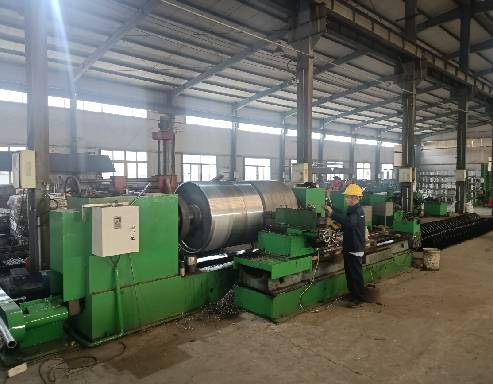 Afrikaans
Afrikaans  Albanian
Albanian  Amharic
Amharic  Arabic
Arabic  Armenian
Armenian  Azerbaijani
Azerbaijani  Basque
Basque  Belarusian
Belarusian  Bengali
Bengali  Bosnian
Bosnian  Bulgarian
Bulgarian  Catalan
Catalan  Cebuano
Cebuano  Corsican
Corsican  Croatian
Croatian  Czech
Czech  Danish
Danish  Dutch
Dutch  English
English  Esperanto
Esperanto  Estonian
Estonian  Finnish
Finnish  French
French  Frisian
Frisian  Galician
Galician  Georgian
Georgian  German
German  Greek
Greek  Gujarati
Gujarati  Haitian Creole
Haitian Creole  hausa
hausa  hawaiian
hawaiian  Hebrew
Hebrew  Hindi
Hindi  Miao
Miao  Hungarian
Hungarian  Icelandic
Icelandic  igbo
igbo  Indonesian
Indonesian  irish
irish  Italian
Italian  Japanese
Japanese  Javanese
Javanese  Kannada
Kannada  kazakh
kazakh  Khmer
Khmer  Rwandese
Rwandese  Korean
Korean  Kurdish
Kurdish  Kyrgyz
Kyrgyz  Lao
Lao  Latin
Latin  Latvian
Latvian  Lithuanian
Lithuanian  Luxembourgish
Luxembourgish  Macedonian
Macedonian  Malgashi
Malgashi  Malay
Malay  Malayalam
Malayalam  Maltese
Maltese  Maori
Maori  Marathi
Marathi  Mongolian
Mongolian  Myanmar
Myanmar  Nepali
Nepali  Norwegian
Norwegian  Norwegian
Norwegian  Occitan
Occitan  Pashto
Pashto  Persian
Persian  Polish
Polish  Portuguese
Portuguese  Punjabi
Punjabi  Romanian
Romanian  Russian
Russian  Samoan
Samoan  Scottish Gaelic
Scottish Gaelic  Serbian
Serbian  Sesotho
Sesotho  Shona
Shona  Sindhi
Sindhi  Sinhala
Sinhala  Slovak
Slovak  Slovenian
Slovenian  Somali
Somali  Spanish
Spanish  Sundanese
Sundanese  Swahili
Swahili  Swedish
Swedish  Tagalog
Tagalog  Tajik
Tajik  Tamil
Tamil  Tatar
Tatar  Telugu
Telugu  Thai
Thai  Turkish
Turkish  Turkmen
Turkmen  Ukrainian
Ukrainian  Urdu
Urdu  Uighur
Uighur  Uzbek
Uzbek  Vietnamese
Vietnamese  Welsh
Welsh  Bantu
Bantu  Yiddish
Yiddish  Yoruba
Yoruba  Zulu
Zulu conveyor impact bed
Understanding Conveyor Impact Beds Ensuring Material Safety and System Efficiency
Conveyor systems are vital components in a wide range of industries, from mining to manufacturing, facilitating the efficient transport of materials. One critical aspect of conveyor systems is the impact bed—an integral part designed to protect both the conveyor structure and the materials being transported. The conveyor impact bed plays a pivotal role in enhancing the longevity and efficiency of the conveyor while ensuring safe and effective material handling.
What is a Conveyor Impact Bed?
A conveyor impact bed is a support system positioned beneath the conveyor belt in areas where heavy materials are loaded onto the belt. Its primary function is to absorb the energy created by the impact of materials falling from a height. Without an impact bed, the conveyor belt would endure excessive stress, leading to potential damage, increased maintenance costs, and premature system failure.
Impact beds typically consist of a series of robust rubber or polyurethane pads, strategically placed to cushion the load and provide stability. This cushioning effect reduces the risk of belt sagging, misalignment, and wear. The design of impact beds is crucial, as it must effectively distribute the load over a larger area to minimize pressure points that could lead to belt degradation.
Why Are Conveyor Impact Beds Important?
1. Protection of the Conveyor System The most significant advantage of utilizing an impact bed is the protection it offers to the conveyor system. By absorbing impacts, the impact bed prevents damage to the belt, idlers, and frame. This protection results in less downtime and lower maintenance costs as the wear and tear on the system is significantly reduced.
conveyor impact bed

2. Improved Material Handling The use of impact beds also contributes to the smooth handling of materials. By minimizing the bounce and shock associated with heavy loads, these beds ensure that materials remain securely on the belt, reducing spillage and improving overall transport efficiency.
3. Enhanced Safety Safety is paramount in any industrial setting. By preventing spillage and maintaining the integrity of the conveyor system, impact beds help create a safer work environment. This is especially critical in operations where workers are in proximity to moving materials, as the likelihood of accidents decreases when loads are securely managed.
4. Energy Efficiency The proper positioning of impact beds can enhance the energy efficiency of conveyor systems. By reducing the energy needed to move materials and minimizing the stress on the belt, companies can save significantly on their energy costs. This efficiency not only benefits the company’s bottom line but also contributes to more sustainable practices.
Choosing the Right Impact Bed
Selecting the appropriate conveyor impact bed requires careful consideration of several factors, including the type of materials being transported, the height from which they are dropped, and the overall design of the conveyor system. It is essential to consult with professionals who understand the intricacies of conveyor systems to ensure that the chosen impact bed meets the specific operational needs.
Conclusion
In conclusion, conveyor impact beds are indispensable components that safeguard both the integrity of the conveyor system and the safe handling of materials. By reducing wear and tear, improving material handling efficiency, enhancing workplace safety, and promoting energy conservation, impact beds contribute significantly to operational success in industrial environments. As industries continue to evolve and demand higher efficiency and safety standards, the importance of conveyor impact beds will remain paramount, necessitating ongoing innovation and attention to design and functionality. Embracing advanced solutions in impact bed technology can lead to substantial benefits across various sectors, driving productivity and sustainability forward.
-
Revolutionizing Conveyor Reliability with Advanced Rubber Lagging PulleysNewsJul.22,2025
-
Powering Precision and Durability with Expert Manufacturers of Conveyor ComponentsNewsJul.22,2025
-
Optimizing Conveyor Systems with Advanced Conveyor AccessoriesNewsJul.22,2025
-
Maximize Conveyor Efficiency with Quality Conveyor Idler PulleysNewsJul.22,2025
-
Future-Proof Your Conveyor System with High-Performance Polyurethane RollerNewsJul.22,2025
-
Driving Efficiency Forward with Quality Idlers and RollersNewsJul.22,2025





























